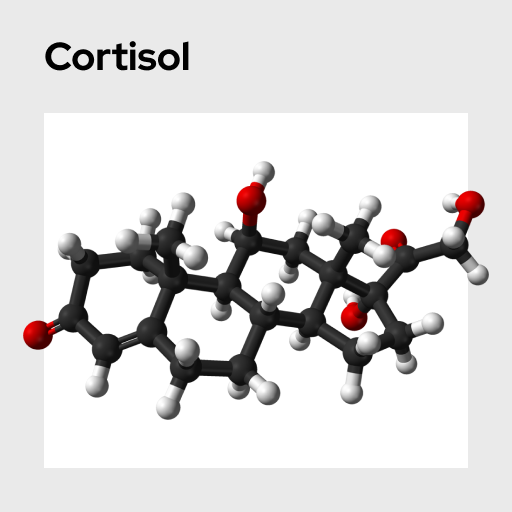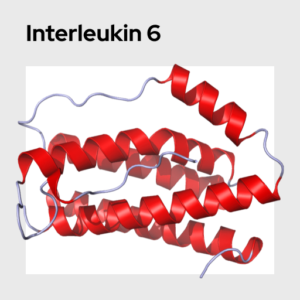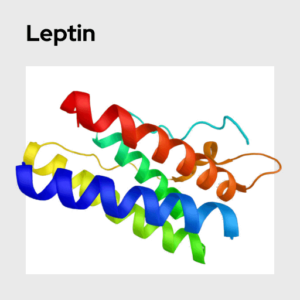Cortisol
Cortisol is an adrenal glucocorticoid that is released when the HPA-axis has been engaged. It is frequently used as a measure of psychosocial stress. While acute stress tends to increase levels of cortisol, some research finds that chronic stress leads to blunted cortisol rhythms. Note that cortisol also influences blood sugar levels, metabolism, and immune activity. Most of the cortisol in the blood (~90%) is bound to corticosteroid-binding globulin which renders the hormone inactive. On the contrary, cortisol found in saliva is mostly free, unbound, and biologically active.
Name: Free and Total Cortisol
Category: Stress
Type of Test: Blood + Saliva
Cortisol (Hydrocortisone, 11β,17α,21-trihydroxypregn-4-ene-3,20-dione) is a glucocorticoid steroid hormone produced in the zona fasciculata of the adrenal glands. As a glucocorticoid, cortisol primarily serves to regulate glucose metabolism, particularly in the context of stress. Because it increases in response to stress when the hypothalamic-pituitary-adrenal (HPA) axis is activated, cortisol is often considered to be one of the most important regulators of the stress response. However, cortisol also plays key roles in regulating immunological activity, metabolism, memory and cognitive function, blood pressure, and fetal development during pregnancy.
In addition to increasing in response to stress, cortisol also exhibits circadian rhythmicity. Specifically, in most healthy adults, cortisol release peaks in the early morning upon waking, and then gradually decreases throughout the day, reaching its lowest level at night. Cortisol is present in the body in two primary forms: free and protein-bound. The free form of cortisol is biologically active; however, most cortisol (~90%) in the blood is bound to proteins such as corticosteroid-binding globin (CBG) and albumin. Most cortisol that passes into saliva, on the other hand, is free, unbound and biological active. Accordingly, cortisol is often best quantified in saliva (i.e., because this cortisol is free), but total levels (i.e., including bound) can also be quantified in plasma / serum samples. Having said that, salivary and serum / plasma levels of cortisol are, in most contexts, highly positively correlated.
Dorn, L. D., Lucke, J. F., Loucks, T. L., & Berga, S. L. (2007). Salivary cortisol reflects serum cortisol: analysis of circadian profiles. Annals of Clinical Biochemistry, 44, 281–284. https://doi.org/10.1258/000456307780480954
Gunnar, M. R., Talge, N. M., & Herrera, A. (2009). Stressor paradigms in developmental studies: What does and does not work to produce mean increases in salivary cortisol. Psychoneuroendocrinology, 34, 953–967. https://doi.org/10.1016/j.psyneuen.2009.02.010
Reynolds, R. M., Hii, H. L., Pennell, C. E., McKeague, I. W., Kloet, E. R. de, Lye, S., … Foster, J. K. (2013). Analysis of baseline hypothalamic-pituitary-adrenal activity in late adolescence reveals gender specific sensitivity of the stress axis. Psychoneuroendocrinology, 38, 1271-1280. https://www.sciencedirect.com/science/article/pii/S0306453012003794






